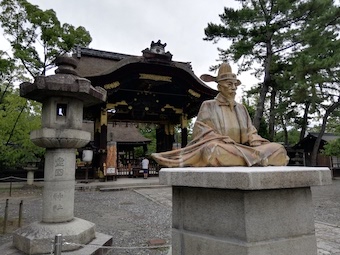By the end of 1637, Christians in Japan had been suffering years of bitter persecution, and in desperation some forty thousand of them gathered from across the country in a seaside fortress at Shimabara, near Nagasaki. There they were besieged by land; but they resisted so stubbornly, that the Government sent to the Dutch at Hirado for a powerful gunship.
The Dutch in Hirado must have known that they were helping the Japanese to massacre tousands of men, women and children; nevertheless, they complied with the Government’s request, and bombarded the fortress. They hoped that obliging the Japanese would mean a monopoly on all trade with Europe, and they were willing to let the country’s Christians pay the price.
Despite the involvement of the Dutch, the Christians continued to resist until April 12th, 1638, when the fortess at Shimabara fell at last to the forces of the Government. The men, women and children within were slaughtered without mercy, and the Christians of Japan remained marginalised, disorganised and unable to bear witness for two centuries.
172 words



